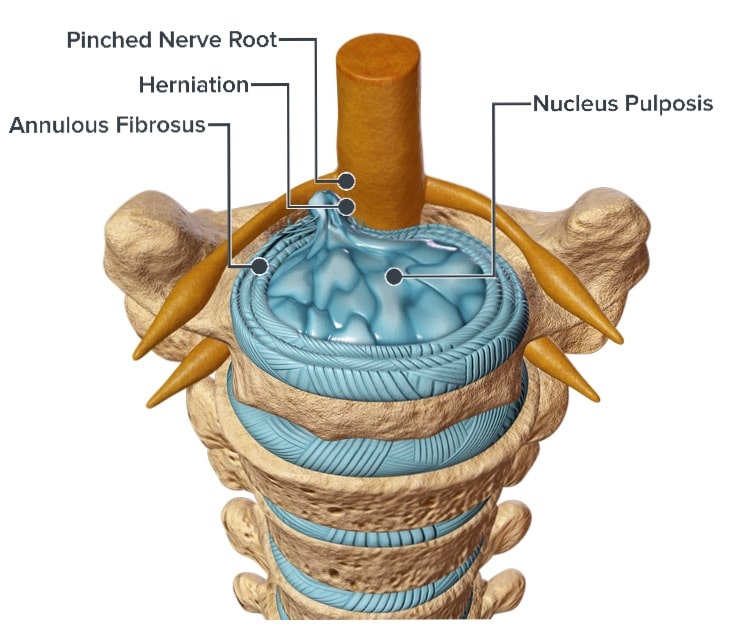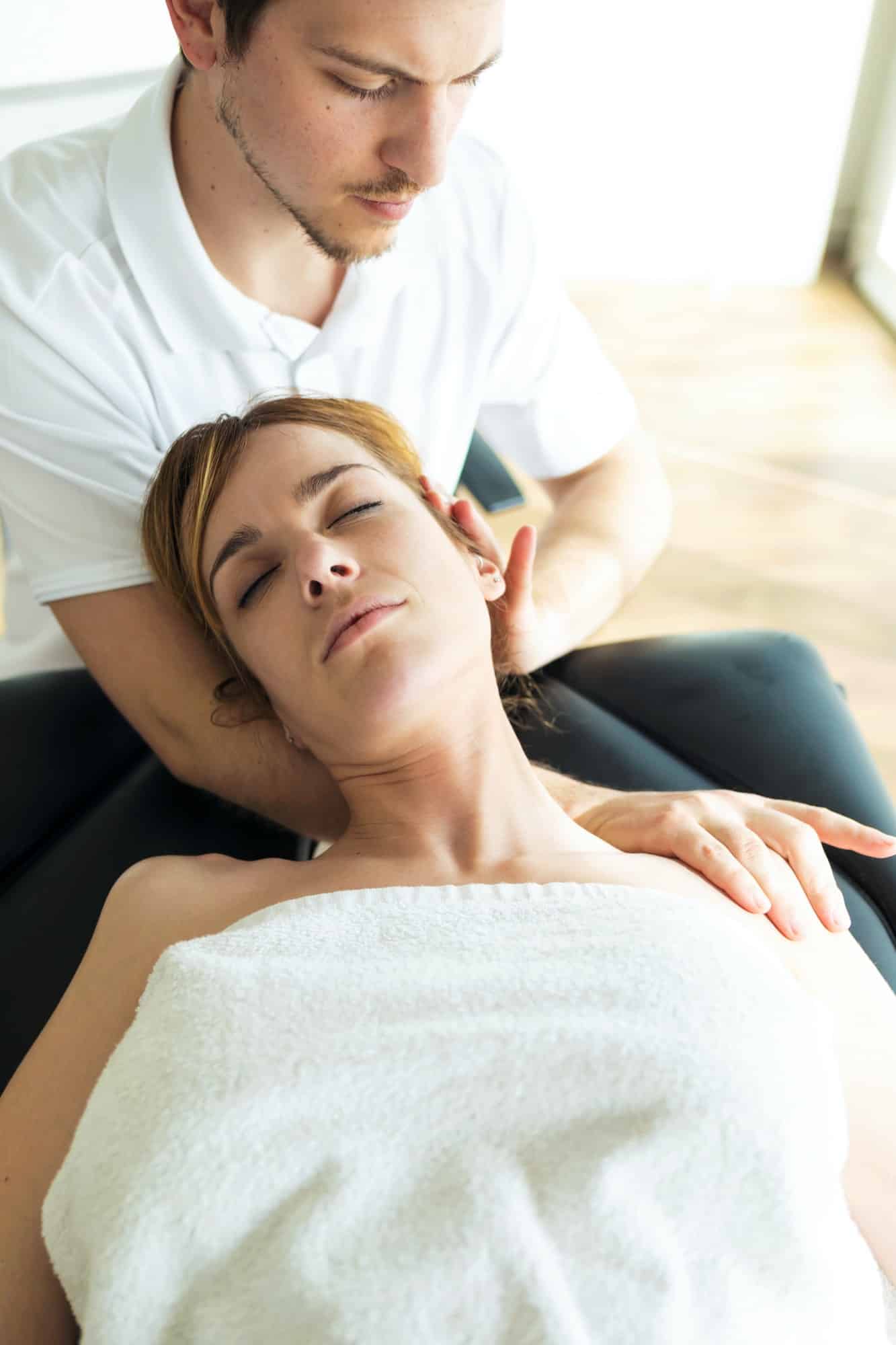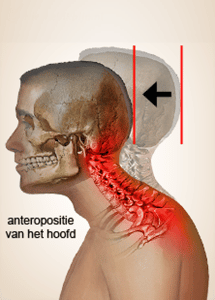Neck pain
- Cervical ra dicular syndrome (including neck herniation)
- Narrowing in the spine: stenosis
- Fracture of a vertebra
- Whiplash trauma
- Facetsydrome
- Posture-related neck pain
Cervical radicular syndrome (including herniated disc)
Features
Cervical radicular syndrome is a collective term for complaints in the neck/shoulder/arm that arise from pressure or irritation of the nerves in the neck.
Complaints may include pain and tingling in the neck/shoulder/arm and loss of strength due to pressure on the nerves.
Cause
The pressure or irritation can be caused, for example, by a bulging of the intervertebral disc (neck hernia) or bone overgrowth due to wear and tear.
Treatment
Research has shown that physical therapy is effective in treating neck pain due to cervical radicular syndrome. Both manual therapy, dry needling and exercise therapy can reduce neck pain. Exercise therapy focuses primarily on strengthening neck and upper back muscles. If the neck pain is accompanied by headaches, this will also be addressed during treatment.
Whiplash trauma
Features
The most common whiplash symptoms are pain in the neck, head, shoulders and back. Disorders of concentration, fatigue, dizziness and forgetfulness also occur.
Cause
Whiplash injuries often occur after a rear-end collision. During the collision, the head makes a very rapid movement from back to front without colliding with anything. In a split second, this causes the cervical spine to be excessively stretched and extremely bent backward and/or forward.
Whiplash is the name for this origin mechanism. As a result of whiplash trauma, damage can occur in the cervical spine and nervous system. However, this only happens in a small proportion of cases. In most cases, no abnormalities are seen on X-rays or MRI after the trauma.
Treatment
Because whiplash is common, much research is being done on it. Particularly in recent years it appears that exercise therapy can help reduce the symptoms. This involves training with a relatively light intensity. The training focuses on improving the condition.
Cervical facet syndrome
Features
In cervical facet syndrome, one or more facet joints of the cervical spine are limited in movement. The facet joints are small joints of the spine. They connect the vertebrae stacked on top of each other and allow the neck to move. Pain from the facet joints is felt at the back of the neck, usually on one side, and can radiate to the shoulder.
Treatment
Manual therapy has proven very effective in treating pain and restriction in cervical facet syndrome.
Posture-related neck pain
Features
Posture-related neck pain is characterized by pain in the neck and upper back due to incorrect posture, such as while performing work. The main symptoms are pain, stiffness and a tired feeling in the neck.
Cause
The pain occurs mainly because the head "hangs" too far forward. The center of gravity of the head lies in front of the spinal column, increasing the strain on the neck muscles. The muscles become overloaded and painful points in the muscle, called trigger points, develop. Since the symptoms are often related to the posture at work, a long-term problem can arise. After all, the same strain occurs every working day.
Treatment
It starts with an intake in which the complaints, problems and questions are inventoried. This intake is followed by a physical examination and analysis of (working) posture and movement. After the examination a treatment plan will be drawn up and discussed with you. After this the treatment will be started.




